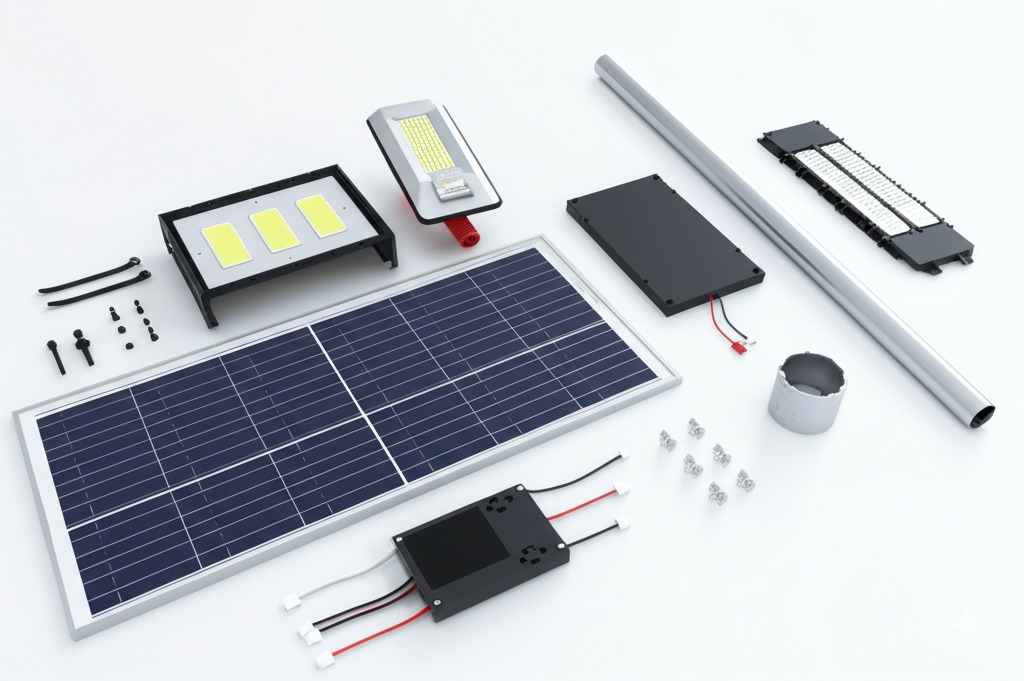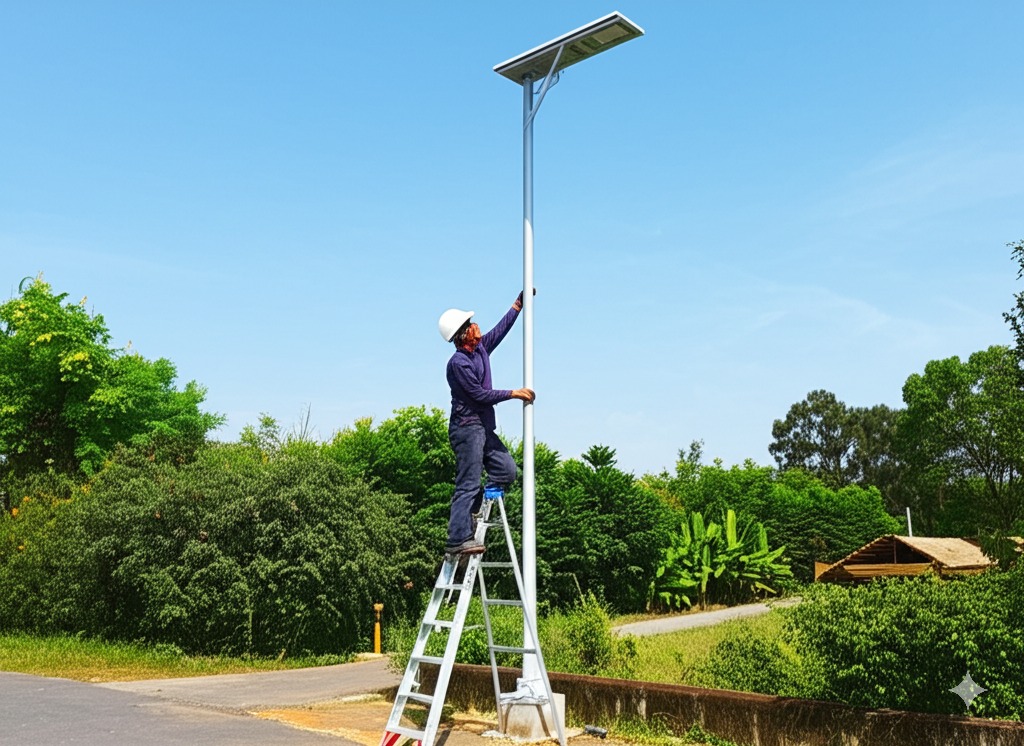Many communities struggle with expensive electricity bills and unreliable street lighting. Dark streets create safety concerns while traditional lights keep costing more each year. Solar street lights offer a practical alternative that pays off in the long run.
Solar panel street lights are independent lighting systems that use sunlight to power LED lights, providing illumination without the need for traditional electricity. They include a solar panel, battery, LED fixture, and controller, offering savings and easier installation.

Choosing the right solar street lights can seem complicated, but understanding the key factors makes the process easier. Let's explore how to select, install, and maintain these lights for optimal performance.
What Are the Advantages of Solar Street Lights?
Conventional streetlights come with ongoing electricity costs and complex wiring. I've seen firsthand how switching to solar can solve these issues while also helping the environment.
Solar street lights reduce energy costs by 100% and require less maintenance, making them a sustainable and cost-effective lighting solution. They also operate independently of the grid, ensuring reliability during power outages.

Detailed Benefits Breakdown
Here's a more in-depth look at the advantages:
| Benefit | Description |
|---|---|
| Cost Savings | Eliminates electricity bills and reduces maintenance expenses. |
| Environmental Impact | Reduces carbon footprint by using renewable energy. |
| Grid Independence | Provides reliable lighting during power outages. |
| Easy Installation | No need for trenching or wiring, making installation faster and less disruptive. |
| Low Maintenance | Long-lasting components require minimal upkeep. |
| Enhanced Safety | Improved visibility and security in public areas. |
Having worked with these lights for over a decade, I can say that the long-term savings and environmental benefits are significant. They're a smart investment for any community or business.
What Should You Consider When Choosing Solar Street Lights?
Selecting the right solar street light involves several important factors. Not all lights are created equal, so it's crucial to know what to look for.
Consider the solar panel efficiency, battery capacity, LED brightness, and control features when choosing solar street lights. Look for durable materials and certifications to ensure long-lasting performance.

Key Selection Criteria
-
Solar Panel Efficiency:
- Choose monocrystalline panels with at least 20% efficiency.
- Ensures maximum energy capture in varying weather conditions.
- Look for panels with a long lifespan (25+ years).
-
Battery Capacity:
- Opt for lithium-ion batteries for longer lifespan and higher energy density.
- Ensure sufficient capacity to provide several days of backup power.
- Consider temperature rating for optimal performance in extreme climates.
-
LED Brightness and Color:
- Select LEDs with a high lumen output (at least 150 lumens per watt).
- Choose a color temperature that provides comfortable and safe illumination (3000K-5000K).
- Look for adjustable brightness settings for energy conservation.
-
Control Features:
- Motion sensors to dim the light when no one is around.
- Timers to adjust lighting schedules based on needs.
- Remote monitoring and control for easy management.
We've seen that investing in quality components from the start saves money and reduces headaches in the long run. Don't compromise on these key features.
How Do You Ensure Optimal Performance and Longevity?
Proper installation and maintenance are essential for maximizing the lifespan and efficiency of solar street lights. Follow these guidelines to keep your lights shining bright for years to come.
Install solar street lights in locations with unobstructed sunlight and follow the manufacturer's instructions for mounting and wiring. Regularly clean the solar panels and inspect the battery and connections to ensure optimal performance.

Best Practices for Installation and Maintenance
-
Optimal Sunlight Exposure:
- Install lights in areas with at least 6 hours of direct sunlight per day.
- Avoid placing lights near trees or buildings that could cast shadows.
- Consider the angle of the sun throughout the year for best placement.
-
Proper Mounting and Wiring:
- Follow the manufacturer's instructions for secure mounting.
- Use appropriate wiring and connections for safety and reliability.
- Ensure the solar panel is facing the correct direction for maximum sunlight capture.
-
Regular Cleaning:
- Clean the solar panels every few months to remove dust and debris.
- Use a soft brush or cloth and mild soap to avoid scratching the surface.
- Schedule cleaning based on the local environment (e.g., more frequent cleaning in dusty areas).
-
Inspecting and Maintaining Components:
- Check the battery regularly for signs of damage or corrosion.
- Inspect the wiring and connections for loose or frayed wires.
- Replace any damaged or worn-out components promptly.
From my experience, regular maintenance is key to preventing problems and extending the life of your solar street lights. A little effort goes a long way.
Conclusion
Solar panel street lights provide a sustainable and cost-effective lighting solution, so choose wisely, install carefully, and maintain regularly for long-lasting benefits.

